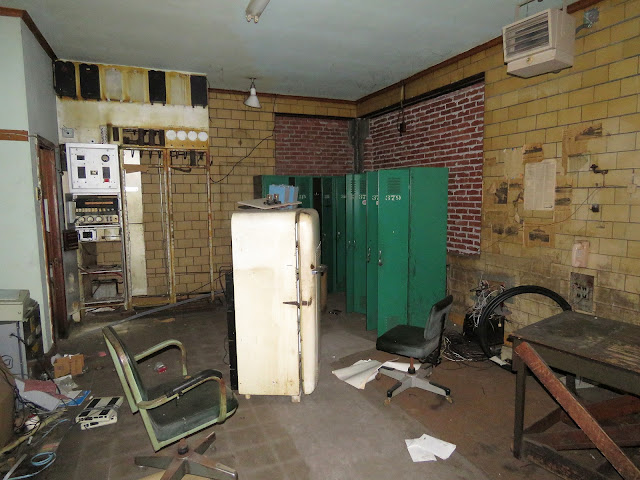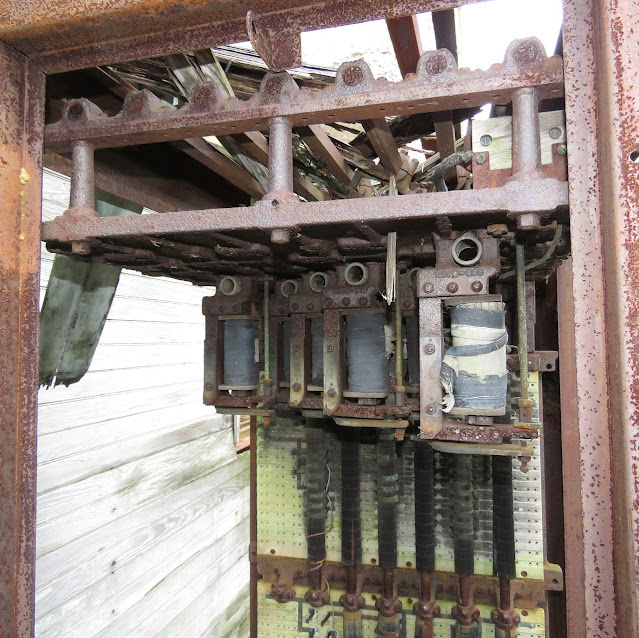Over the last 20 years North America has seen the virtual extinction of "Paper Dispatching", the practice of railroad dispatchers being totally reliant on field tower operators as their eyes and ears. Operators report movements to dispatchers, dispatchers mark down train progress and inform the operators of any necessary changes. Depending on the railroad the dispatchers and operators may have more or less authority and in others the while two level hierarchy may not exist at all. Anyway, in this time period there has only been one rail system that I am aware of that went from Tower controlled to Dispatcher controlled in one fell swoop and that would be Philadelphia's commuter railroad SEPTA.

Founded as an umbrella funding organization in the 1960's, for its first decade and a half SEPTA contracted with the legacy carriers Penn Central and Reading and later the government supported Conrail that emerged from the bankruptcies of both predecessors, to provide service on the Pennsylvania and Reading Railroad's vintage electrified suburban districts. The PRR side of the house was generally worked on the interlocking tower system with single towers controlling one or a few adjacent interlockings. The Reading on the other hand developed a taste for CTC schemes controlled by panels within existing towers. In the mid-1980's a series of events would combine to create SEPTA's unique tower culture. First, Conrail was forced to pull out of contract suburban operation in favor of direct operation by SEPTA. Second, SEPTA completed construction of the Center City Commuter Tunnel that linked the PRR and Reading networks, eliminating the stub terminals and third, SEPTA built the brand new Airport Line along with a number of "state of good repair" projects like the rebuilding of the Reading trunk line and improvements to the West Chester and Chestnut Hill West lines.
The result was that all of SEPTA's rails were controlled from 7 interlocking towers. The first two, WIND and WAYNE, were co-located within the old Reading WAYNE tower building at Wayne Jct and consisted of two 1960's vintage CTC panels that not only controlled practically all of the Reading suburban network, but also parts of Conrail freight lines due to the shared Reading System heritage. The next two, BROAD and MARK, were built as part of the Commuter Tunnel Project and replaced two large Model 14 legacy terminal plants with modern N-X panels. The next two, MEDIA and CHESTNUT HILL (WEST), were direct PRR legacy towers that controlled terminal operations on the West Chester and Chestnut Hill West lines with their original interlocking equipment. Finally A TOWER was constructed new in 1985 to control the Airport Line with a contemporary unit level panel.
Beginning our tour at
Wayne Junction, WAYNE tower was the most traditional of SEPTA's diverse rail control locations being located inside the former Reading WS tower, a 1920's era
Model 14 powered facility that controlled the
double junction between the New York/Bethlehem main line, Chestnut Hill East branch and Tabor Branch freight link. Unlike the PRR, the Reading wasn't afraid of new technology and in 1965 it implemented a wide-scale CTC project that consolidated control of its Suburban network inside WS/WAYNE tower. (Note, by CTC I mean remote interlocking control as there was only a limited amount of actual Rule 261/CTC operation in this territory.) In the tower the old Model 14 machine was supplanted by two high end General Railway Signal NX panels installed in adjacent corners of the operator's floor.
 |
| Operator lines a route at 16TH ST JCT on the WAYNE panel in 1991. |
 |
Other half of the WAYNE panel in 1991.
|
This gave rise to WAYNE Towers's unique "Two Towers in One" layout with the "WAYNE" panel and operator controlling everything between 16TH ST JUNCTION at the top of the Viaduct to TABOR JCT (Fern Rock) on the Main Line and the Fox Chase branch (via Newtown Jct and Cheltenham Jct). The WAYNE panel saw one major alteration with the "south" end of the panel being extended to accommodate the insertion of the new HUNT interlocking and reconfiguration of WAYNE interlocking to support the mid-80's opening of Robert's Yard. Compare the above and below photos to the original 1965 configuration (NSFW).
 |
South end of the WAYNE panel in 1994
|
 |
| North end of the WAYNE panel in 1994 |
The second panel and its operator was known as WIND and was interesting for not only being a virtual tower located about 6 feet away from the WAYNE panel, but also not actually controlling an interlocking named WIND. WIND's territory was everything north of Tabor Junction including the R5 route from Jenkintown to Doylestown, the R2 to Warminster, the old New York Branch/R3 to Woodbourne and even the previously signaled Stony Creek Branch to Norristown. WIND also had control of the New York Short Line that would become the Conrail Trenton Line north of Cheltenham Jct which included a single controlled siding and various joint interlockings between Neshaminy Jct and Woodbourne.
 |
WIND panel 1991 with WOOD interlocking and Fairless Branch.
|
Between 1991 and 1993 the first state of the Conrail SEPTAration began with a re-signaling and track re-alignment project on the Trenton Line transferring control of Conrail trains between CP-CHELTENHAM JCT and CP-WOOD (exclusive) to the Conrail dispatcher. You can see in the following 1994 photo of WIND how the north end of the old New York Branch has been deleted off the panel as an active element.
 |
WIND panel in 1994 w/ WOOD interlocking etc blanked out.
|
SEPTA's WIND would retain control of both CP-WOOD and gain control of CP-TRENT after TRENT tower's closure in 1994. Unfortunately my photos do not reveal the method of control, but it would most likely be a computer terminal seeing as how CP-WOOD and CP-TRENT was re-signaled to 90's Conrail standards. The only remaining portion of the Reading Suburban network I have yet to cover is the Norristown terminal area that was originally controlled from a CTC panel in NORRIS tower. NORRIS tower closed some time after 1988 and by 1994 the CTC panel had appeared in WAYNE tower (likely under purview of the WAYNE operator). A 1991 photo shows a non-operable mimic board installed in the tower which may have operated to inform the WAYNE operator of R6 terminal movements before NORRIS closed.
 |
1991 Norristown area minic board.
|
 |
1994 Norristown area CTC panel.
|
If you were wondering how two operators could handle all the train movements on the Reading side of the SEPTA network on an NX panel without any form of automated train labeling, I was told that at peak times each "tower' each would support at least two panel operators working in a non-socially distanced manner. Based on the recollections of a visitor, it was also likely that the physical WAYNE tower operation included a train director to call some routes and handle communications with the SEPTA dispatchers. By the turn of the 21st century SEPTA WIND and WAYNE had a very distinct presence on the scanner scene with their VHF transmissions registering loud and clear at least 10 miles distant in South Jersey. It was a truly modern rail dispatching operation in all but name.
 |
MARK tower panel.
|
Looping through Center City, the next tower encountered on the SEPTA trunk was MARK. Part of the Market East station complex, I believe it was located somewhere around the ticket counter / station master's office on the east end. MARK arguably replaced the 111 lever Model 14 RACE ST interlocking plant that controlled the Reading Terminal complex. The Center City Commuter Tunnel shows the gross inefficiency of stub terminals as a the 13 track Reading Terminal complex was able to be replaced by 4 through tracks. MARK "tower" consisted of a US&S unit lever panel in an office controlling VINE, a 4-track full crossover hear the north end of the tunnel, and MARK, an interlocking without any appliances (aka switches, derails, etc) that spanned the length of the Market East station platforms. It did not control the adjacent JUNIPER interlocking located between Market East and Suburban station on tracks 2 and 3. MARK opened in 1984 with the closure of Reading Terminal.
 |
BROAD tower center panel with 20TH ST and SCHUYLKILL interlockings.
|






















